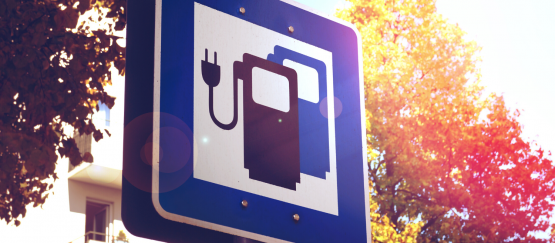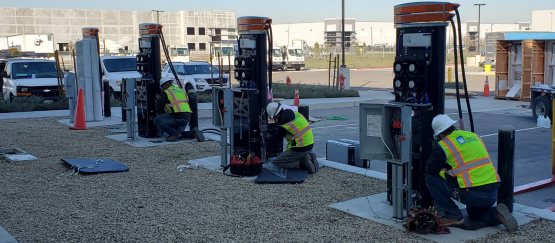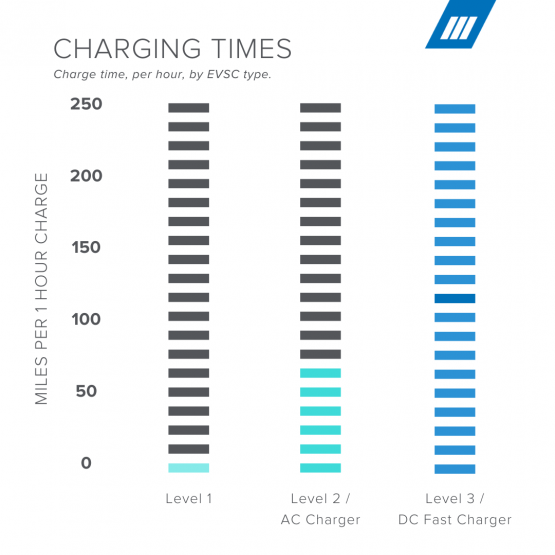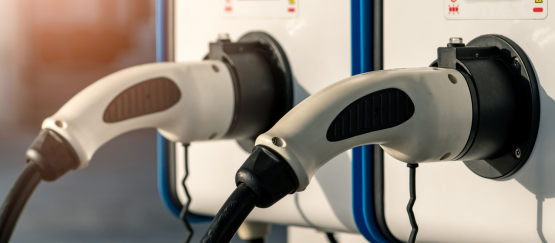Has Your Company Gone Electric?
What’s powering your morning commute – an electric power, gas, or diesel vehicle?
If the answer is electric, you are included in the 1.1 million electric vehicle (EV) drivers across the United States. Electric-car sales are increasing and the electric-vehicle market is growing, reported sales are up 81% compared to 2017.
In the first 6 months of 2019 alone, California consumers purchased roughly 51,750 electric cars. While the vast majority of Californians are still driving gas or diesel-fueled vehicles, electric-car sales are expected to continue to grow over the next decade.
Already, most major brands offer an electric vehicle option including Tesla, Chevrolet, Nissan, Toyota, Ford, and BMW.

As the electric-vehicle market grows, the demand for a charging infrastructure to support drivers grows too. While the range of mileage varies from model to model, most electric vehicles can travel more than 100 miles per charge, while others can like the Tesla Model 3 Long Range can exceed 300 miles.
Because of this, more and more businesses across California are looking to install electric vehicle charging stations (EVCS) to capitalize on the growing market. Leading companies like LinkedIn, Sierra Nevada Brewing, Kohler, United Airlines, and more have already begun offering EV charging stations at their headquarters and other offices.
If you’re a building owner or property manager thinking about installing a charging station, consider these factors.
Thinking About an Electric Vehicle Charging Station?
If you’re considering installing fast-charging infrastructure to be used as a commercial pay site or for your commercial fleet, look no further. Here’s what you need to consider and how to start shopping around for an EVCS solution that fits your needs.
Hire a Contractor
What to Look For
First you’ll need to select a contractor. To save you time and money, we recommend selecting a design-build contractor with EVCS experience to ensure your system works for your site, needs, and is built to the highest standards.
Work with Mark III
As a multi-trade contractor with an in-house design team, Mark III offers clients a turn-key electric-vehicle charging station solution, from concept to commissioning. Mark III will navigate the various municipalities and utilities companies across Northern California – so you don’t have to!
Mark III self-performs the majority of the work required to build a charging station.

Determine Which System is Right for You
Level-1 Charger
Level-1 charging stations use a 120-volt connection, or a standard household outlet. This option is not the most efficient as charging times can be very slow – level-1 chargers offer about 4.5 miles per 60 minutes charging. Most often, this option is utilized in homes, but it not a viable option for businesses.
Level-2/AC Charger
Level-2 chargers utilize a 240-volt power source, the same power source that is utilized by an electric dryer or oven. This option is more efficient than level 1, but still not the most efficient option – level-2 chargers offer about 70 miles of range per 60 minutes charging.
Level-3/DC Fast Charger
Level-3/DC Fast Chargers are the fastest charging station currently available and consequently, the most expensive. These fast charging systems are for commercial use only and require more electricity that homes. Impressively, DC Fast Chargers provide 40 miles of range per 10 minutes charging, which translates to 240 miles per 60 minutes charging.
Subsidy and Grant Opportunities
Subsidies and grant monies are available for qualifying business owners – here are some projects that have been funded over the past 10 years. These monies can be combined to offset install costs for local businesses. So far, there are roughly 21,000 EV charging stations throughout California and the Air Resources Board has budgeted $1.087 billion in electric vehicle initiatives. Follow the links below to see if you qualify:
Commercial Pay Sites ROI vs Fleet Sites ROI
As a business owner, you can ensure your return on investment (ROI) through both commercial pay sites and private fleet stations.
Commercial Pay Sites
Commercial pay sites are popping up all over the country to support the growing number of electric vehicles on the road. Many of these pay sites are privately owned and charge users a fee to “fill up” their batteries.
Fleet Sites
If you have an a commercial fleet of electric vehicles, you can save money by installing your own EVCS. If you’re concerned about electricity costs, consider developing an optimization program with a company like ChargePoint. They can help you optimize your charging times so that stations are only active outside of peak hours to gain the most advantage around utility rates.
We recently provided design-build services to a client and installed a new 2000A 480v utility service with distribution for (12) Level-3/DC Fast Chargers. This system was designed to support an electric fleet with various vehicle types and charge time frames.
Tailor Your EV System to Fit Your Needs
Mark III can design and build systems tailored to your needs. Our team can provide turn-key design-build services and complete installation for your electric-vehicle charging station. Our skilled electricians and project managers are dedicated to providing you with the best customer experience. We can help you navigate the utility requirements for sites that need utility service upgrades, facilitate fast-tracked permitting, and perform in-house design and project management services. We are experienced working with PG&E, MID, and SMUD.
Reach out to us today and get ahead of the electrification of California!

Sources
Images: Canva Stock Photos
Chart: Plug In America